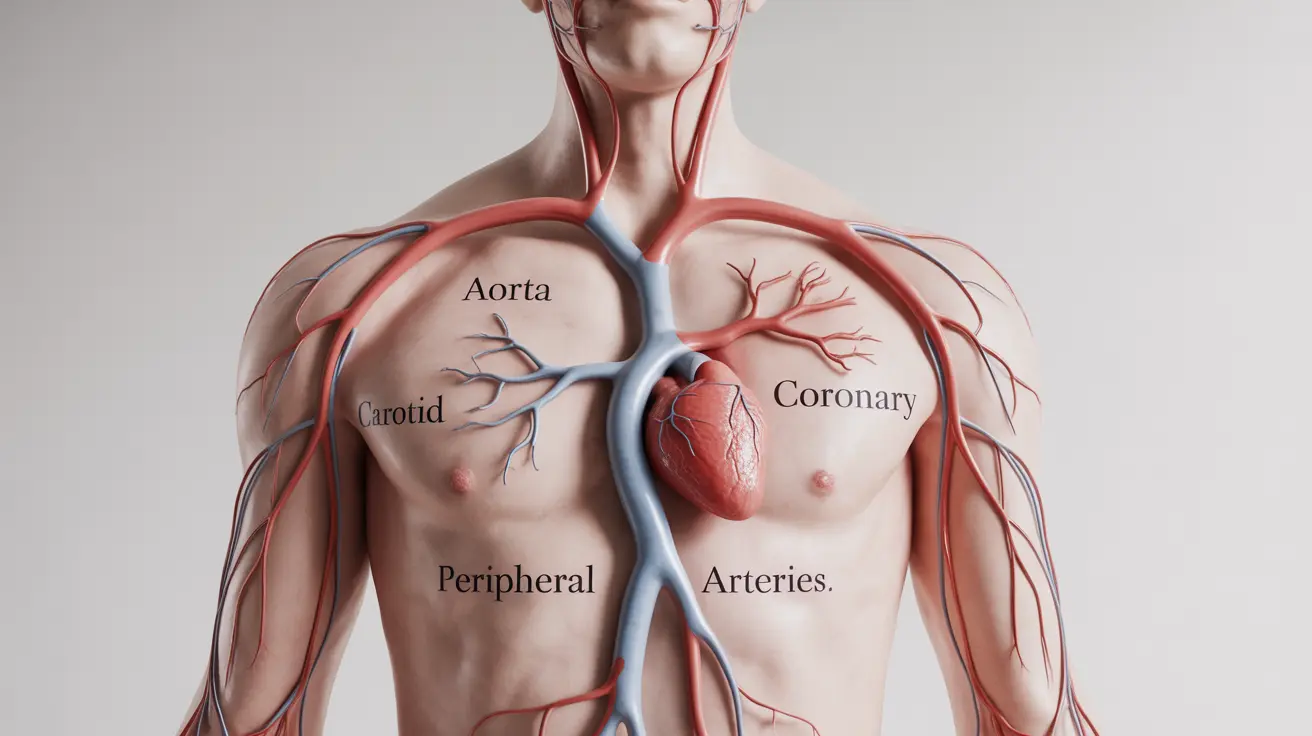The arteries of the body form an intricate network that delivers oxygen-rich blood from the heart to every tissue and organ. Understanding this vital system is crucial for recognizing how our circulation works and identifying potential health concerns. From the powerful aorta to the delicate arterioles, each vessel plays a specific role in maintaining our health and vitality.
The Aorta: Your Body's Main Highway
The aorta serves as the primary arterial trunk, beginning at the heart's left ventricle and extending through the chest and abdomen. This largest artery branches into smaller vessels that supply blood to specific body regions. The ascending aorta rises from the heart, while the aortic arch curves downward, giving rise to crucial branches that supply the head, neck, and upper limbs.
Critical Arteries of the Head and Neck
The carotid arteries, branching from the aortic arch, deliver essential blood flow to the brain and face. These vessels split into internal and external branches, with the internal carotid arteries supplying the brain and eyes, while the external carotid arteries nourish facial tissues and scalp.
The Circle of Willis
At the base of the brain, several arteries form a circular connection known as the Circle of Willis. This unique structure provides backup circulation to the brain, helping ensure consistent blood flow even if one vessel becomes compromised.
Arteries of the Torso
The thoracic aorta gives rise to multiple branches that supply vital organs in the chest cavity. These include:
- Coronary arteries (nourishing the heart muscle)
- Bronchial arteries (supplying the lungs)
- Intercostal arteries (feeding the chest wall)
Abdominal Arterial Network
Below the diaphragm, the abdominal aorta branches to supply digestive organs, kidneys, and other vital structures through vessels such as:
- Celiac trunk
- Superior and inferior mesenteric arteries
- Renal arteries
Arteries of the Extremities
The subclavian arteries branch to become the brachial arteries in the arms, eventually dividing into the radial and ulnar arteries at the elbow. In the legs, the common iliac arteries branch from the aorta, becoming the femoral arteries that supply the lower extremities.
Maintaining Arterial Health
Keeping your arteries healthy requires attention to lifestyle factors and regular medical check-ups. Key preventive measures include:
- Regular physical activity
- Heart-healthy diet rich in fruits, vegetables, and whole grains
- Maintaining healthy blood pressure and cholesterol levels
- Avoiding tobacco use
- Managing stress effectively
Frequently Asked Questions
What are the main arteries of the body and what roles do they play in circulation? The main arteries include the aorta, carotid arteries, coronary arteries, and peripheral arteries. Each plays a specific role: the aorta serves as the main distribution vessel, carotid arteries supply the brain, coronary arteries nourish the heart, and peripheral arteries deliver blood to the limbs.
How does the aorta branch to supply blood to different parts of the body? The aorta branches systematically: the ascending aorta gives rise to coronary arteries, the arch provides vessels to the head and arms, and the descending portion supplies the chest and abdomen through multiple smaller branches.
What symptoms might indicate problems with major arteries like the aorta or carotid arteries? Warning signs may include chest pain, shortness of breath, sudden severe headache, weakness or numbness on one side of the body, difficulty speaking, or leg pain during exercise.
How do arteries in the arms and legs differ in structure and function from those in the torso and head? Peripheral arteries in the limbs tend to be more muscular and elastic to accommodate movement and position changes. They also have more extensive collateral circulation compared to central arteries.
What lifestyle changes or treatments can help maintain healthy arteries and prevent arterial diseases? Key preventive measures include regular exercise, a balanced diet low in saturated fats, blood pressure control, cholesterol management, smoking cessation, and stress reduction. Medical treatments may include medications, lifestyle modifications, or surgical interventions when necessary.




